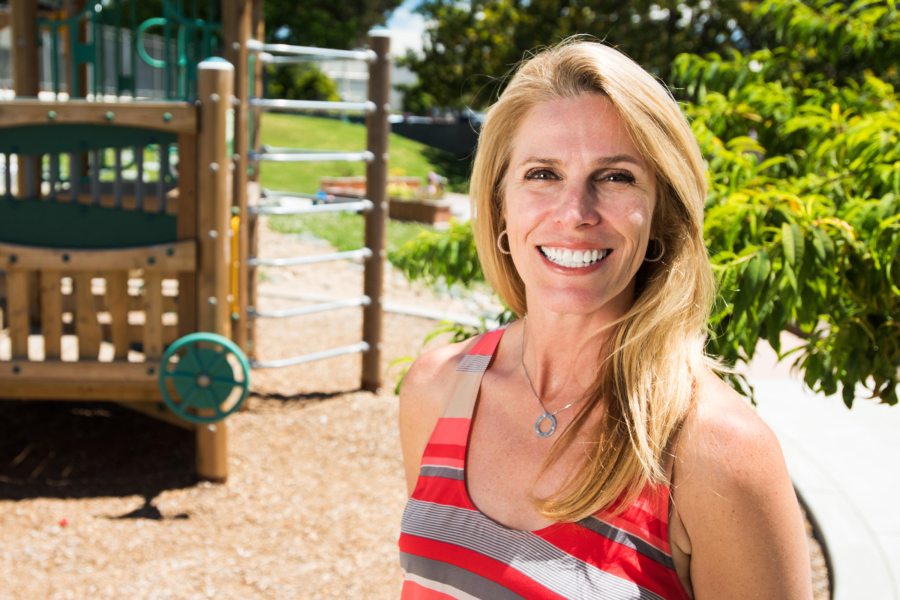Key Takeaways:
- In a post-pandemic world, employers may have to rethink how to provide childcare benefits. It may no longer be onsite or nearsite care, but instead resources that parents can leverage from home.
- Cost is often one of the biggest barriers to implementing childcare benefits, but leadership needs to understand and buy into the ROI that comes from supporting and retaining working parents.
- There are many innovative providers helping employers support their employees with childcare. It’s important to spend time with the founders and talk with customers they’ve served to make sure they are solutions-based organizations.
For our latest People Matters interview, we chatted with Fran McIntyre, founder and managing director of Pendulum Care Dependent Solutions, a consulting service for HR and early childhood education leaders. Before Pendulum, Fran founded Childrens’ Creative Learning Centers where she worked with employers to design and implement on-site childcare centers, and develop long-term strategies to provide optimal benefits to their employees.
In this interview, Fran discusses trends she’s noticing on employer-sponsored childcare benefits, some of the most significant implementation challenges, vendors that offer worthwhile solutions, and what needs to be in place for hybrid work configurations to be successful.
This interview has been edited for clarity and brevity.
We’d love to hear your story. How did you get into this line of work?
In 1992, I founded Childrens’ Creative Learning Centers (CCLC), which offered high-quality early care and education for families in the San Francisco Bay Area. CCLC elevated the status of early childhood teachers by providing above-market salaries and a work environment that ensured they had the resources and support they needed. Our culture was about creating an environment where teachers could be successful, which ensured the children and families we served experienced the best quality education.
From 1992 to 2000, the organization grew to seven centers and because of our reputation in the community, CCLC was invited to participate in the RFP for the new Oracle childcare center. While we were a small organization, our reputation and responsiveness led us to being selected as the operator. It was a big win for our organization, and that’s when we realized that what we did as an organization was unique and special.
Within three years, we were selected to provide on-site childcare center services for Stanford, Electronic Arts, Google, backup care for Intel, Yahoo and others. After six years of successful growth we were acquired by a larger organization in 2007, where I served as the Chief Development Officer and grew the organization to about 113 worksite centers across 23 states. In that role, I worked side-by-side with HR teams across multiple companies nationally to successfully execute the design and implementation of on-site childcare centers and develop long-term strategies to provide optimal benefits to their employees.
In 2014, I retired from that position, which allowed me the opportunity to spend time with my daughters and explore how I could continue to support workplace challenges in a different capacity. In 2016, I formed my consulting firm, which focuses on taking my passion working with HR leaders and childcare providers and seeing how I can continue to identify and address the needs employees have.
Can you share a bit more about what you focus on at Pendulum Dependent Care Solutions?
Pendulum focuses on supporting HR leaders looking to add benefits that support working parents and caregivers. We assist HR leaders with evaluating current benefit offerings and potential vendors. If they are interested in investing in an onsite childcare center, our team facilitates the oversight and planning for their new center development.
Over the past few years, we have increased our work with academia, as universities need help retaining and attracting faculty, especially as faculty start to retire. Beyond that, they also want to retain students who may be parents. Because of my experience as an operator, I can assist with the selection and onboarding of their childcare operator that can provide the right level of support.
When working with childcare operators, we can help with any challenges they are facing, from enrollment and hiring to curriculum. We also help with their employer support strategy. Ultimately, we are a solutions-based partner for our clients.
What trends have you noticed around employers’ interest in implementing caregiving solutions for their employees?
They know childcare is something their employees struggle with everyday, so it is increasingly a priority. COVID really impacted the way employers think about worksite childcare and childcare in general as a benefit. Since March 2020, the need and demand for finding a solution is more critical than ever. The difference is that the solution may not be onsite or nearsite, given the rise of remote and hybrid workers. It may need to be closer to home.
This is where forming a childcare network, understanding what operators are in the market and providing quality care is important. What kind of care do your employees need? Are they looking more for home or backup care? And can that backup care be in a center or does it need to be in home where the child feels more comfortable?
Employers are also thinking creatively about how to deliver childcare as a benefit. For example, they may offer a stipend per year to assist with childcare costs. There are also companies now that provide subsidy support. An employer may have employees who would qualify for a subsidy based on household income, and the employer would provide this as a resource so workers are not spending a ton of time trying to figure out if they qualify and how to access those resources.
What are some of the challenges that come up as an employer starts to think about implementing a new solution?
The largest is typically cost related. It is critical for leadership to buy in on making this investment. Another challenge is finding a solution that works for every type of employee. Some parents prefer having care that is close to home as opposed to close to work. Others desire a flexible enrollment schedule for their child. We see companies struggle with internal barriers where leadership may not see the value in these benefits.
One common question we hear is: “We understand that employees need childcare solutions, but what about the employees who don’t have children?” Part of our role as consultants is making sure the employer understands that if an employee, especially if they are a manager, has a caregiver challenge they likely won’t be able to come to work. But with a reliable solution, they can be there for their team, which ultimately supports all employees. We work with our clients to make sure they have this language for their leadership.
The other challenge is liability. The first thing legal often thinks about is what is the exposure to us, especially if it’s onsite or nearsite or endorsing an operator. And that’s where outsourcing this to a childcare operator that has a great reputation can help mitigate this liability.
Are there any companies or providers that are helping to make the process of providing these benefits easier for employers?
We are constantly vetting service providers and understanding who they are, what they offer, their quality, and potential cost structure. We speak to clients they serve, so we can, with great confidence, have a full understanding of their offering and provide a solid recommendation to our own clients. Ultimately, the company will make the decision on whether it’s the right choice for them.
I sit on the advisory board for Wellthy and Wonderschool and so I have a great inside understanding of who they are as companies and their focus on making sure they are truly solutions-based organizations. I’ve also spent quite a bit of time with Hey Mirza which provides subsidy support for employers, which can be an innovative solution for employers who are thinking about how they can provide a different offering.
There is Bumo, Tootris, and Family First, all of which helps you find care within your community. Vivvi works with employers to provide onsite care as well as in-home care. And Helpr provides in-home nanny and care support. Finally, Bright Horizons has offered services for employers for decades and are well known for their quality and solutions-based portfolio.
What are you noticing when remote work and hybrid configurations are working best for employers?
Currently, a third of the workforce is still working from home, and for a workplace policy to be successful, it is paramount for leadership to support the needs of all employees. If leadership is not in tune with what is happening within their workforce, particularly when they are hybrid, then there’s a cultural breakdown. And that does impact productivity. Managers and employees need to offer the tools to work remotely so they don’t feel isolated. Managers should have regular check-ins and understand the needs across their team.
By offering generous paid time off, flexible scheduling, and remote work options, employers can better meet the demands of both work and home life. It’s also important to make sure employees have adequate mental and emotional health resources and support, such as relevant counseling services as well as telemedicine options that are easier to take advantage of on busy days.
From our conversations with clients it appears that employers are planning to invest more in caregiving benefits such as expanding the use of flexible schedules, offering dependent care flexible spending accounts, and subsidizing or offering childcare services.
When you’re not working, how do you enjoy your time?
My husband and I have four daughters who all live in various parts of the country. We all try to get together whenever we can and I love hearing about how they’re growing in their professional and personal lives.
We also have a vineyard and grow chardonnay grapes. While it is a lot of work to maintain, my husband and I love spending time in our vineyard! This year was our 7th harvest.
Finally, I love the work I do. It’s truly my passion and I really never have looked at what I do as “work.” I’m truly blessed that I’ve been able to apply what I’ve learned over the years to something that brings me a lot of joy.






